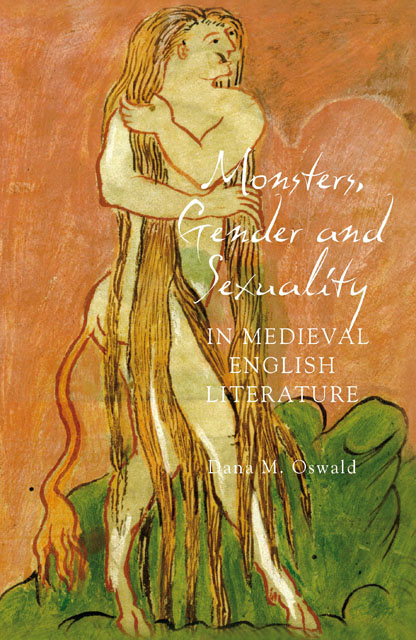Book contents
- Frontmatter
- Contents
- Dedication
- Acknowledgements
- List of Figures
- Introduction: Sex and the Single Monster
- 1 The Indecent Bodies of the Wonders of the East
- 2 Dismemberment as Erasure: the Monstrous Body in Beowulf
- 3 Circulation and Transformation: The Monstrous Feminine in Mandeville’s Travels
- 4 Paternity and Monstrosity in the Alliterative Morte Arthure and Sir Gowther
- Conclusion: Transformation and the Trace of the Monster
- Bibliography
- Index
3 - Circulation and Transformation: The Monstrous Feminine in Mandeville’s Travels
Published online by Cambridge University Press: 01 March 2023
- Frontmatter
- Contents
- Dedication
- Acknowledgements
- List of Figures
- Introduction: Sex and the Single Monster
- 1 The Indecent Bodies of the Wonders of the East
- 2 Dismemberment as Erasure: the Monstrous Body in Beowulf
- 3 Circulation and Transformation: The Monstrous Feminine in Mandeville’s Travels
- 4 Paternity and Monstrosity in the Alliterative Morte Arthure and Sir Gowther
- Conclusion: Transformation and the Trace of the Monster
- Bibliography
- Index
Summary
Toward the end of the twelfth century, however, a new understanding – a new model – of change emerged … people were increasingly fascinated by … radical change, where an entity is replaced by something completely different.
(Bynum, Metamorphosis 25)Women are more essential to reproduction than men – a society could not survive with a few women of child-bearing age; but it could survive if most men were eliminated and a few kept in a cage somewhere. Again, women have to be circumscribed: the whole system can be seen as built upon womb envy on the part of the inessential male. (Craib 51)
IF OLD ENGLISH narratives figure the body as permanent, then in Middle English literature the body begins to look profoundly flexible, plastic, and, perhaps, unstable. The shift between the literatures of these two periods is often seen as being cataclysmic: the concerns of Anglo-Saxon authors might seem to be washed away by the voices of Norman and later Middle English writers, but 1066 is not a neat cultural dividing line, as has been long acknowledged. Some Old English writing bleeds past this famous date, and early Middle English literature sometimes reflects Old English poetic practices and concerns. However, the shift that takes place, writ large, between these two periods, does offer readers a different vision of the monster, and of sex, gender, and sexuality. Middle English literature is rich with monsters, particularly in its exploration of more Continental genres like romance as well as travel narratives and visions of the exotic East. The bodies of both monsters and people seem far less taboo in Middle English; however, that is not to suggest that these bodies are any less dangerous, either physically or culturally. The gendered monsters of one of the most popular travel narratives of the period, Mandeville's Travels, represent a new kind of threat to English identity and to the body: the danger of transformation, invisibility, and the miscegenation that results from these new bodily states.
The permanent bodies of Old English monsters mark them as Other, as outsiders; these monsters also dwell outside of human society in their own communities. Their status as monstrous is both physical and unchanging; they can never become a part of human civilization because their difference is written visibly on their bodies.
- Type
- Chapter
- Information
- Monsters, Gender and Sexuality in Medieval English Literature , pp. 116 - 158Publisher: Boydell & BrewerPrint publication year: 2010



